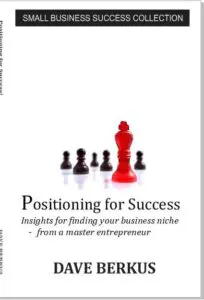If only newspaper publishers, book publishers, record companies, and movie producers would have had the vision to see their future as we now see it, we might have become a digital society with much less disruption and loss of jobs than we have experienced these past years and continue to experience.
Did the proprietor of the neighborhood bookstore or national rental chain not see this coming? Frictionless distribution through moving bits of information is so much cheaper for all but those making their living in the middle of the supply chain. Money always flows to the most inexpensive solution that meets the needs of a buyer. It should have been obvious to all in those niches and others like it that digital distribution would supplant product manufacture, inventories, physical distribution systems, warehouses, and limited retail shelf space, as soon as the infrastructure allowed it to do so.
And yet, as we have explored in past insights, it is human nature to protect the business, the existing product and the existing revenue stream – and against human nature to displace one’s own product when it is still generating good income.
[Email readers, continue here…] There are many ways businesses can reinvent themselves, even if a product must be manufactured and put into the hands of the user in physical form. Product marketing materials, user manuals, service manuals, sales guides, and catalogs all must migrate to the web to cut the use of paper and make them
more accessible over time and distance. But even more important to the future of your company is the deliberate reinvention of how the essence of the company’s core is delivered.
Can a consultant be as effective when half or more of the meetings held are using Skype or telepresence? Can a software product be delivered as a service “on demand,” saving hardware and human error in updates? Is there a way to speed to the user a product, such as a new music release, to gain instant gratification and lesser cost at the same time?
Everywhere we look the supply chain is being disrupted by companies finding ways to deliver bits of information or entertainment instead of atoms of paper, DVDs or hardware.
In your strategic planning, do you consider ways to obsolete one or more of your products or services by delivering it in bits not atoms?










Michael,
Thanks for your thoughtful comment. Apparently I hit a nerve with this one. But I am not sure I agree, reasoning that all businesses can eliminate steps that require paper or physical portions of a product with a little forethought. The simplest thing is to eliminate all but the warranty card and “getting started” sheet with most anything requiring instructions. Most of us have done that already. The next wave will be more creative and difficult. Is it the expansion and devolution of sales channels for furniture, as an example? The product doesn’t change, but the supply chain does.
Let’s see if anyone else joins in on this.
-Dave
First of all, congratulations on adding a whole bunch of new berkonomics readers.
While the combination of digital technology and online transmission have revolutionized the media you refer to, it isn’t just about bits and bytes, or lack of vision, or poor business strategy.
The businesses you have cited are basically exclusionary – set up to keep people, and innovation, outside the fortress. I have no sympathy for them at all. Having worked personally in all of these businesses, as well as broadcast and cable television, I can say that the problem is not that there is no vision available, it’s more that only the people “in the club” are given the latitude and the resources to make things happen, and more often, to continually fail upward. The individual, the renegade, the entrepreneur – regardless of how much foresight that person might have – faces a huge challenge in getting past gatekeepers who cannot, or do not want to, understand what he or she is trying to do.
The world of technology, on the other hand, has exploded precisely because someone with a vision, plus the programming skill to realize it, can create a product or service on his or her own and demonstrate its validity without having to devote inordinate amounts of time trying to breach the barriers to entry. And fortunately people such as Mr Berkus and his colleagues in the angel and VC world are then open to funding new ideas based primarily on their merit instead of circling the wagons because “we’ve never done it that way before.”